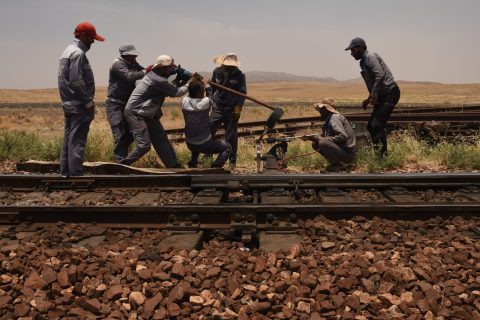New Silk Road could become double-stack corridor

The number of trains running between China and Europe increases year by year. In order to avoid bottlenecks, logistics companies are seeking for new routes. The other solution to increase the capacity of the New Silk Road is to convert it into the double-stack rail corridor. Zurich University of Applied Science and leading consulting firm Roland Berger researched this possibility. Lukas Mani, Bid-Manager Sales of Stadler Rail, will tell more about the topic at the RailFreight Summit, to be held on 15-16 May in Gdansk.
The research was inspired by the successful use of rail double-stack transportation in North America, especially in the USA. “A glance at the North American railways shows how rail freight traffic can be operated profitably over long distances. The seven major US Class I Railroads generate margins averaging more than 35 per cent (2017 data)”, Lukas Mani says. According to him, the study examines the possibility to create a double-stack rail freight corridor on the New Silk Road – on the 1520-millimetre stretch through Kazakhstan, Russia and Belarus. “This is the largest part of the Eurasian corridor and most of the trains use exactly the same route”, he notes.
Main challenges
Lukas Mani considers India as a good example. “The only solution to the limited capacity is to build a freight-dedicated corridor, similar to those in India,” he adds. India operates a network of eight freight-dedicated rail corridors that provide double-stack services. Their total length is around 10 thousand kilometres.
However, the double-stack rail corridor, even as a freight-dedicated edition, is impossible without infrastructure investments to avoid the main challenges and obstacles. Those are the track specifications (axle load, etc.), railway tunnels, bridges and level crossings. Of course, the freight-dedicated double-stack corridor should be non-electrified due to the clearance problems with overhead lines. The other challenge is rolling stock. The double-stack line requires special flatcars that are produced by a few manufacturers.
RailFreight Summit
Do you want more about the study on the double-stack rail corridor between Europe and Asia? Come to the RailFreight Summit in Gdansk. This year’s RailFreight Summit is the second edition of the event. Top-level speakers will gather in the intermodal hub to discuss New Silk Road connections and other routes through Poland and Central Europe. Registration is still open. More information about the event can be found on the website.
You just read one of our premium articles free of charge
Want full access? Take advantage of our exclusive offer






This proposal (de-electrification of Transsib line) is related to so-called “Kando denial” phenomenon. The inventor of throughout electrification for railway mainlines, hungarian engineer Kalman Kando was born 150 years ago, July 1869. His idea to directly supply HVAC to catenary wire at the national grid frequency, was first realized in Hungary then found worldwide application in France (TGV), Britain, Japan (Shinkansen), South Korea and Italy (Frecciarossa). Return to diesel is climate crime!
Thank you, Tamás, for the information. It is really interesting!
Why go innto costly infrastructure loading guage investments?Did you take distributed power solutions into account in your study* If yes, what’S the comparism looks like*
Prof. B. Kortschak Erfurt/Vienna